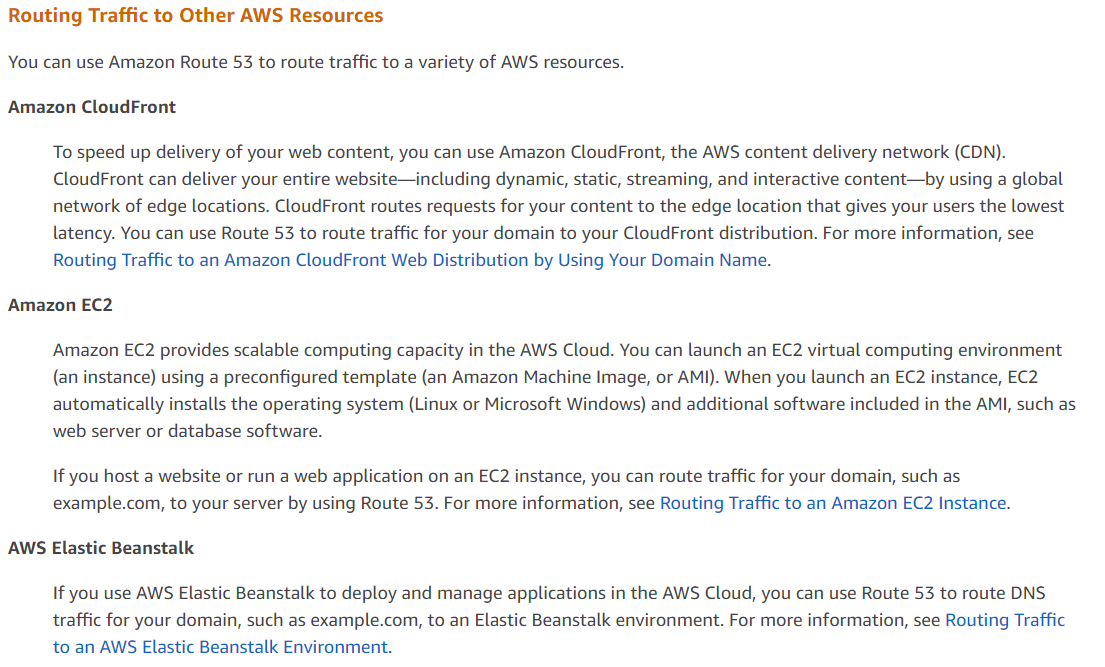Not an AWS Service Routed by AWS Route 53
Question
Which of the following is not an AWS service that AWS Route 53 can route traffic to?
Answers
Explanations
Click on the arrows to vote for the correct answer
A. B. C. D.Answer: D.
Amazon Route 53 integrates with Amazon CloudWatch for monitoring, not for routing traffic.
https://docs.aws.amazon.com/Route53/latest/DeveloperGuide/integration-with-other-services.html
AWS Route 53 is a highly available and scalable cloud-based Domain Name System (DNS) web service that can route traffic to a variety of AWS services. It can also route traffic to non-AWS resources, such as on-premises servers or resources hosted with other cloud providers.
Among the given options, the correct answer to the question is option D - Amazon CloudWatch. AWS Route 53 cannot route traffic to Amazon CloudWatch.
Here is a brief overview of the other options and how Route 53 can route traffic to them:
A. Amazon CloudFront: This is a content delivery network (CDN) service that distributes content such as HTML, CSS, and JavaScript files, videos, and other web assets globally. AWS Route 53 can route traffic to Amazon CloudFront by creating an alias record that points to the CloudFront distribution.
B. Elastic Load Balancing: This service distributes incoming traffic across multiple EC2 instances or containers in multiple Availability Zones to ensure high availability and fault tolerance. AWS Route 53 can route traffic to Elastic Load Balancing by creating an alias record that points to the load balancer.
C. Amazon RDS: This is a relational database service that provides managed database solutions for various database engines, such as MySQL, Oracle, SQL Server, and PostgreSQL. AWS Route 53 can route traffic to Amazon RDS by creating a CNAME record that points to the RDS endpoint.
D. Amazon CloudWatch: This is a monitoring and observability service that collects and analyzes metrics, logs, and events from various AWS resources and applications. AWS Route 53 cannot route traffic to Amazon CloudWatch since it is not a resource that can receive incoming traffic.
In conclusion, AWS Route 53 is a powerful DNS web service that can route traffic to a variety of AWS services and non-AWS resources. When using Route 53 to route traffic to AWS services, it is important to understand which services can and cannot receive incoming traffic.